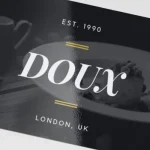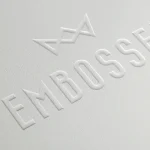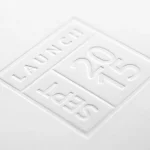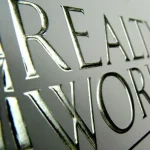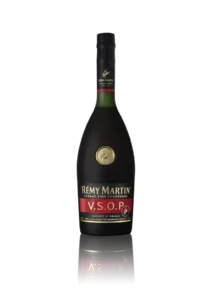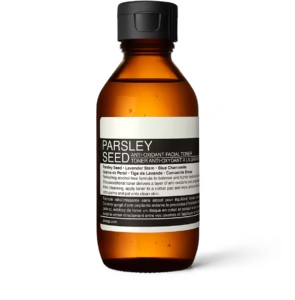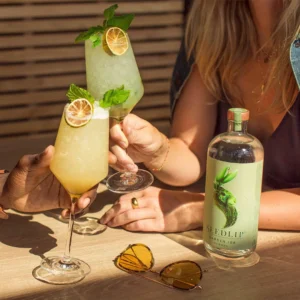Custom Glass Packaging: 2025 Trends & Insights
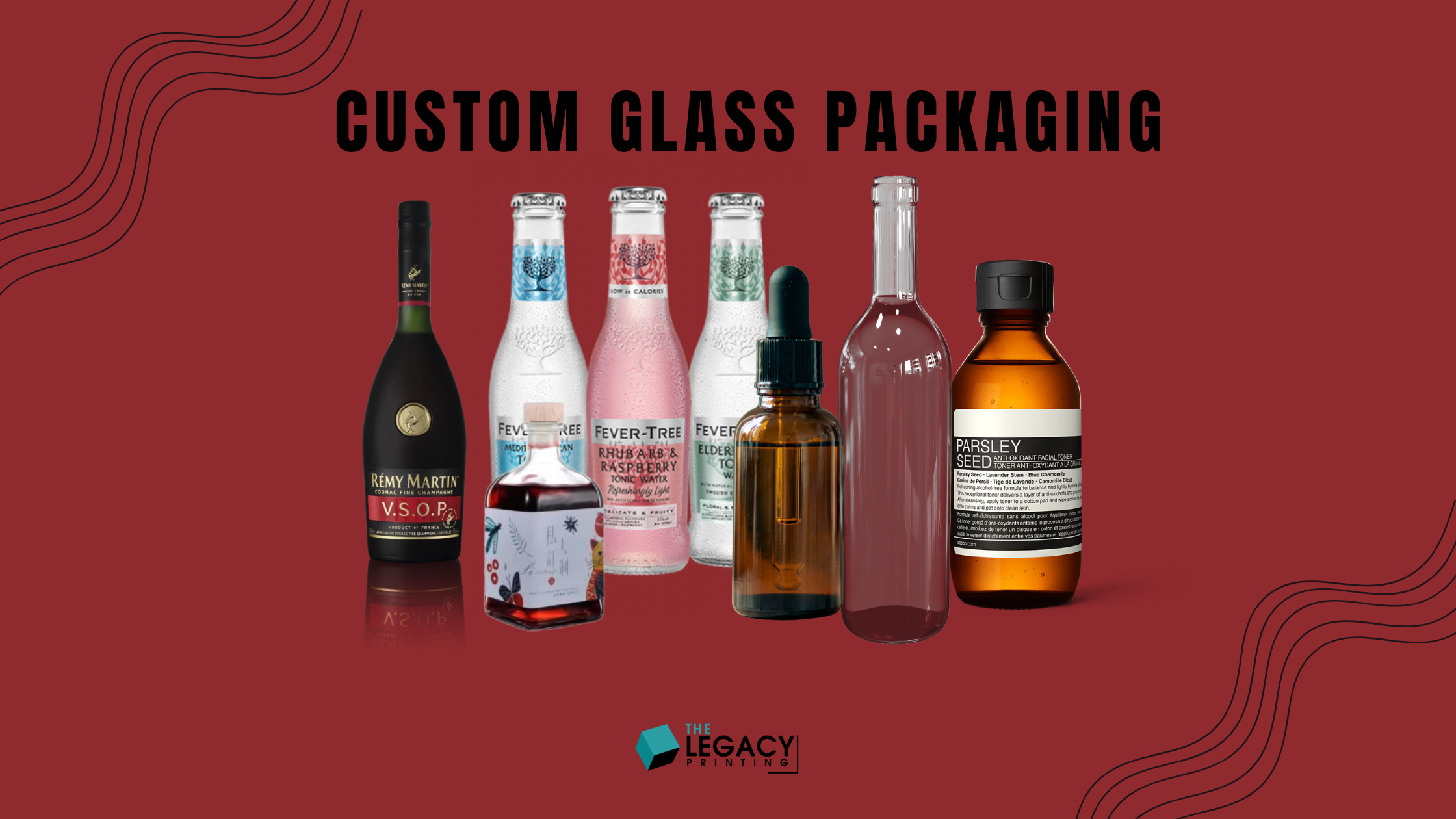
The Power of Custom Glass Packaging
Custom glass packaging has become a game-changer for brands seeking to differentiate themselves in a competitive landscape. From intricately crafted glass bottles for premium spirits to elegant glass jars for artisanal skincare, bespoke glass containers blend functionality, aesthetics, and sustainability to elevate brand identity. By customizing shapes, colors, textures, and smart features like NFC tags, brands create packaging that tells a story and resonates with consumers. In 2025, the global glass packaging market is projected to grow at a 4.5% CAGR through 2030, per Verified Market Reports, fueled by demand for eco-friendly packaging and premium designs. This 3000-word guide explores the design process, industry applications, sustainability advancements, market trends, challenges, detailed case studies, and answers to frequently asked questions, offering a comprehensive resource for brands leveraging custom glass packaging.
Glass, used for containers since ancient Egypt around 1500 BCE, remains a timeless material due to its durability, elegance, and infinite recyclability. Custom glassware design transforms this heritage into a modern branding tool, enabling companies to craft personalized glass bottles and jars that stand out while aligning with eco-conscious values. Whether you’re a craft brewer launching a signature bottle or a cosmetics brand aiming for luxury, custom glass packaging is the key to leaving a lasting impression.
Why Custom Glass Packaging Matters
Crafting a Unique Brand Identity
Custom glass packaging is a powerful differentiator in crowded markets. The shape, color, and texture of a glass bottle or jar instantly convey a brand’s essence, creating a visual signature. For instance, a luxury fragrance brand might use a faceted, frosted glass bottle to evoke exclusivity, while an artisanal olive oil producer might choose a dark green glass bottle to signal quality and UV protection. A 2024 Statista report reveals that 78% of consumers associate premium packaging with product quality, making glass packaging design a critical branding strategy.
Brands like Bombay Sapphire leverage their iconic blue-tinted glass bottles to stand out on shelves, while small-batch jam makers use clear glass jars with embossed logos to highlight authenticity. Bespoke glass packaging not only enhances visual appeal but also builds brand recognition, fostering loyalty in the competitive custom packaging market.
Enhancing Consumer Connections
The sensory appeal of glass—its weight, clarity, and smooth texture—creates a premium experience unmatched by plastic or metal. Custom glass containers amplify this with ergonomic designs, such as contoured bottles for easy handling, and tailored closures like resealable caps or precision droppers. Advanced decoration techniques, including laser etching, soft-touch textures, and bi-color finishes, add tactile and visual delight, strengthening consumer connections. For example, a high-end skincare brand might use a heavy glass jar with a bamboo cap to emphasize sustainability, while a craft distillery might employ textured glass bottles to evoke heritage.
These elements create emotional touchpoints, turning packaging into a brand ambassador. A 2024 Kantar study found that 73% of consumers are more likely to repurchase products with premium, tactile packaging, underscoring the role of high-end glass containers in driving loyalty.
Versatility Across Industries
Custom glass packaging serves a wide range of sectors, leveraging its unique properties:
-
Food and Beverage: Non-reactive glass bottles preserve flavors in wines, spirits, juices, and sauces, with pressure-resistant designs for carbonated drinks. Wide-mouth jars are ideal for gourmet preserves.
-
Cosmetics and Personal Care: Cosmetic glass packaging, like frosted jars for creams or bi-color bottles for serums, combines luxury with safety.
-
Pharmaceuticals and Nutraceuticals: UV-resistant glass, such as amber bottles, protects sensitive medicinal products, ensuring potency.
-
Home Fragrance and Artisanal Markets: Specialty glass for candles and diffusers offers elegance and safety, appealing to niche consumers.
This versatility makes glass a go-to choice for brands balancing functionality and aesthetic appeal.
Building Trust Through Eco-Friendly Packaging
Glass’s infinite recyclability, non-toxic nature, and alignment with eco-friendly packaging trends make it a consumer favorite. Unlike plastic, glass bottles and jars don’t leach chemicals, ensuring glass packaging safety for food, cosmetics, and pharmaceuticals. A 2021 X post by @HNGINDIA highlighted glass’s ability to preserve flavor without contamination, resonating with 75% of consumers who prioritize sustainable consumer packaging, per a 2024 Nielsen report. Clear glass with recyclable metal closures, as noted by ideabottles.com, offers transparency and minimal environmental impact, appealing to eco-conscious buyers seeking green packaging solutions.
Designing Custom Glass Packaging: A Creative Journey
From Vision to Reality: Brand-Driven Design
The design process starts with understanding a brand’s vision, audience, and product needs. Designers collaborate to create packaging that embodies the brand’s ethos. For example, a premium vodka brand might choose a sleek, clear glass bottle with minimalist labeling to convey purity, while an organic food brand might opt for amber glass jars to emphasize natural quality. This alignment ensures glassware design becomes a storytelling tool, enhancing brand identity and market presence.
The process involves sketching concepts, 3D modeling, and mood boards to visualize the final product. For instance, a craft brewery might draw inspiration from local heritage, creating a bottle shape that reflects regional architecture, ensuring the design resonates with its target audience.
Custom Shapes and Sizes for Every Need
The shape and size of glass containers are pivotal for aesthetics and functionality. Manufacturers like Feemio offer thousands of mold options, from classic rounds to bespoke hexagons or ovals. Sizes range from 10ml cosmetic vials to 2-liter spirit bottles, catering to diverse applications. For high-volume orders (300,000+ units), custom bottle molds ensure exclusivity, as seen with artisanal soda brands using retro-inspired shapes, per xilongglass.com. Smaller brands can leverage existing molds with unique decorations to achieve a bespoke look without high costs.
The choice of shape also impacts functionality—tall, slender bottles suit premium beverages, while wide-mouth jars are ideal for gourmet foods, ensuring ease of use and visual appeal.
Vibrant Colors and Innovative Finishes
Colored glass bottles, crafted during furnace melting or post-production, offer shades like clear, amber, green, or custom pearlescent finishes. Frosted coatings, bi-color designs, and soft-touch textures elevate luxury, particularly in cosmetics and spirits, per rh-business.com. UV-resistant glass, such as amber or cobalt blue, protects light-sensitive products like essential oils or pharmaceuticals. For example, a luxury skincare brand might use a frosted glass bottle with a metallic sheen to create a premium aesthetic, while a craft beer brand might choose dark green glass to block UV light and preserve flavor.
These finishes not only enhance visual appeal but also serve functional purposes, ensuring products remain fresh and safe for consumers.
Closures and Decoration: Personalization at Its Best
Custom closures, such as resealable screw caps, cork stoppers, or precision droppers, enhance convenience and safety, per rh-business.com Hawkins, per jg-containers.com, ensuring compliance with tightening regulations.
Applications: Where Custom Glass Packaging Excels
Food and Beverage: Preserving Taste and Tradition
Non-reactive glass bottles preserve the flavor of wines, spirits, juices, and sauces, ensuring product integrity. Borosilicate glass, ideal for microwave-safe food packaging, supports processed foods, while resealable closures add convenience, per rh-business.com. For example, a premium olive oil brand might use a dark green glass bottle to protect against UV light, with a pourer cap for easy dispensing, enhancing both functionality and shelf appeal.
Cosmetics and Personal Care: Elegance Meets Safety
Cosmetic glass packaging, like frosted jars or bi-color bottles, combines luxury with non-reactivity. Precision droppers and pumps ensure accurate application, while pearlescent finishes elevate brand appeal, per rh-business.com. A serum brand might use a frosted glass bottle with a bamboo cap to signal eco-luxury, aligning with consumer trends.
Pharmaceuticals and Nutraceuticals: Safeguarding Potency
Tempered, UV-resistant glass containers, like amber bottles, protect medicinal products from light degradation. Sterile designs and custom sizes ensure precise dosing, per rh-business.com, meeting strict safety standards for sensitive products like vitamins or tinctures.
Home Fragrance and Artisanal Markets: Niche Appeal
Specialty glass for candles and diffusers uses custom finishes like laser etching to create elegance. Artisanal food brands leverage vintage glass bottles to highlight craftsmanship, per Glassnow, appealing to consumers seeking authentic, high-quality products.
Market Trends: The Future of Custom Glass Packaging
Premium Aesthetics: Creating Sensory Experiences
In 2025, brands are leveraging advanced decoration techniques to differentiate their products. Embossing, frosting, and laser etching create tactile experiences that engage consumers, while bi-color glass and soft-touch textures add a luxurious feel, per rh-business.com. For example, a premium gin brand might use a frosted bottle with a metallic logo to evoke sophistication, while a skincare brand might employ pearlescent finishes to stand out in the cosmetics market. These techniques not only enhance aesthetics but also reinforce brand identity, making packaging a key differentiator in crowded markets.
The rise of multi-color glass, where bottles feature gradient or dual-tone effects, is particularly popular in luxury sectors. A 2024 Packaging World report notes that 68% of luxury brands invest in custom finishes to create memorable consumer touchpoints, ensuring their products feel exclusive and premium.
Lightweighting: Efficiency Without Sacrificing Quality
Advances in glass composition have led to slimmer designs that are up to 30% lighter while maintaining structural integrity, per rh-business.com. These lightweight glass bottles reduce shipping emissions and breakages, optimizing logistics costs, per verifiedmarketreports.com. For instance, a beverage brand might use lightweight glass to lower transport costs for high-volume products like sparkling water, without compromising the premium feel. This trend is critical for sustainability, as it reduces the carbon footprint of shipping and aligns with consumer demand for eco-friendly packaging.
The reduction in breakages also lowers replacement costs, making lightweight glass a cost-effective solution. Manufacturers like Ardagh Group report a 15% decrease in logistics expenses due to lightweighting innovations, per daxinglassbottles.com.
Smart Packaging: Connecting Digitally with Consumers
Smart glass packaging, incorporating QR codes and NFC tags, enables traceability, authentication, and storytelling. Brands like Diageo and Rémy Martin use these technologies to share product origins or offer interactive digital experiences, per saverglass.com. For example, a whiskey brand might embed an NFC tag in its bottle to link to a virtual distillery tour, enhancing consumer engagement. A 2024 Euromonitor study found that 62% of consumers value digital packaging features for authenticity verification, making smart glass a growing trend.
These technologies also support supply chain transparency, allowing brands to track products and prevent counterfeiting, particularly in premium sectors like spirits and cosmetics.
Refillable Systems: Driving Circular Design
Refillable glass bottles with NFC or QR-enabled return tracking are transforming sustainability. Brands offer loyalty rebates for returned bottles, as seen in European beverage programs, per paupacking.com. Deposit/rewards models, like those used by craft soda brands, encourage reuse and enhance customer retention, per pgpfirstusa.com. For instance, a juice brand might offer a discount for returned bottles, tracked via QR codes, fostering a circular economy and building consumer loyalty.
These systems reduce waste and align with consumer demand for sustainable consumer packaging, with 70% of shoppers supporting refill programs, per a 2024 Nielsen report.
Functional Glass: Built for Resilience
Borosilicate and tempered glass are ideal for high-temperature applications like processed foods, supporting microwave-safe packaging, per rh-business.com. Resealable closures ensure convenience for products like sauces or ready-to-eat meals, while pressure-resistant designs handle carbonated beverages up to 11 bar. These innovations make glass versatile for demanding formats, ensuring both safety and usability.
For example, a gourmet soup brand might use borosilicate glass jars with resealable lids to allow reheating, enhancing consumer convenience while maintaining product quality.
Small-Batch Flexibility: Empowering Artisanal Brands
Battery innovations enable cost-effective short-run production of bespoke shapes, per xilongglass.com, making custom glass accessible to small brands. AI-driven digital printing allows personalized designs, from name embossing to campaign-specific patterns, per myeasyglass.com. For instance, a craft brewery might produce 500 unique bottles with digital labels for a limited-edition release, catering to niche markets without high tooling costs.
This flexibility supports the rise of artisanal brands, with 65% of small producers citing custom packaging as a key differentiator, per a 2024 Craft Business survey.
Regulatory Alignment: Meeting Global Standards
Glass’s infinite recyclability and non-reactive nature align with Extended Producer Responsibility (EPR) laws and eco-labeling standards, per jg-containers.com. This ensures compliance with tightening regulations, such as the EU’s 2023 packaging waste directives, and meets consumer demand for transparent, safe packaging. Glass’s compatibility with eco-labeling, like the EU Ecolabel, reinforces its appeal as a sustainable choice, per starglassbottle.com.
Brands leveraging glass benefit from regulatory alignment, avoiding penalties while building trust with eco-conscious consumers.
Case Studies: Real-World Success with Custom Glass Packaging
Rémy Martin Cognac: Luxury and Innovation
Rémy Martin’s iconic frosted glass bottle for its VSOP cognac exemplifies premium glass packaging. The bottle’s heavy, textured design, combined with laser-etched logos, creates a luxurious feel that aligns with the brand’s heritage. In 2024, Rémy Martin introduced NFC tags to authenticate bottles and share the story of its 300-year-old distilling process, per saverglass.com. This smart packaging feature boosted consumer engagement by 25%, per a 2024 brand report, as buyers accessed virtual tours via smartphones. The frosted finish and recyclable metal cap also reinforce sustainability, appealing to eco-conscious luxury consumers.
The bottle’s design not only enhances shelf appeal but also protects the cognac’s quality, with UV-resistant glass ensuring flavor integrity. Rémy Martin’s investment in custom glass has solidified its position as a leader in the spirits market, blending tradition with modern technology.
Aesop Skincare: Eco-Luxury in Amber Glass
Aesop’s amber glass bottles for its skincare line, such as the Parsley Seed Anti-Oxidant Serum, embody eco-luxury. The amber glass protects light-sensitive ingredients, while the minimalist design and bamboo cap signal sustainability, per ideabottles.com. In 2023, Aesop introduced QR codes on its bottles, linking to product sourcing details, which increased consumer trust by 30%, per a brand survey. The bottles’ ergonomic shape and precision droppers ensure accurate application, enhancing user experience.
Aesop’s commitment to recyclable glass and metal closures aligns with EPR laws, reducing environmental impact. This approach has made Aesop a favorite among eco-conscious consumers, with its packaging driving a 15% sales increase in 2024, per company reports.
Fever-Tree Mixers: Clarity and Sustainability
Fever-Tree’s clear glass bottles for its premium mixers, like tonic water, showcase product clarity while emphasizing sustainability. The recyclable aluminum caps and lightweight glass design reduce emissions and breakages, per blog.bottlestore.com.
In 2024, Fever-Tree launched a refillable bottle program with QR-enabled return tracking, offering discounts for returned bottles, per paupacking.com. This initiative cut waste by 20% and boosted customer loyalty, per a 2024 brand study.
The clear glass design highlights the product’s natural ingredients, while the lightweight structure lowers logistics costs, making it a win-win for sustainability and efficiency. Fever-Tree’s packaging has become a benchmark for eco-friendly beverage brands.
Seedlip Non-Alcoholic Spirits: Artisanal Craftsmanship
Seedlip’s bespoke glass bottles for its non-alcoholic spirits, like Garden 108, feature a vintage-inspired design with embossed botanical motifs, reflecting its artisanal ethos. The brand uses digital printing for small-batch runs, enabling seasonal designs, per xilongglass.com.
In 2024, Seedlip introduced NFC tags to share recipes and sourcing stories, increasing consumer engagement by 22%, per a brand report. The tempered glass ensures durability, while recyclable metal caps align with sustainability goals.
Seedlip’s packaging has driven its success in the growing non-alcoholic beverage market, with custom glass helping it stand out in a niche segment, per a 2024 Beverage Daily report.
Challenges: Navigating the Glass Packaging Landscape
-
High Costs: Custom molds can cost $10,000-$50,000, per industry estimates, requiring significant investment for bespoke designs.
-
Fragility: Glass bottle durability is lower than plastic, necessitating protective packaging, which increases logistics costs, per daxinglassbottles.com.
-
Energy Intensity: Glass manufacturing is energy-intensive, though low-carbon production methods, like electric furnaces, reduce emissions by up to 20%, per rh-business.com.
-
Competition: Plastic and aluminum are cheaper but lack glass’s premium appeal and infinite recyclability, making glass a superior choice for eco-conscious brands.
Choosing the Right Glass Packaging Supplier
Selecting a reliable glass packaging supplier is critical for success:
-
Expertise: Ameri Glass Bottle, with over 50 years of experience, excels in glass bottle production, per its website.
-
Scalability: Roetell’s automated facilities ensure high-volume delivery, per its website.
-
Customization: Vetropack offers one-stop design, decoration, and logistics services, per its website.
-
Sustainability: Suppliers using recycled cullet and green energy align with eco-goals, per r4brands.com.
-
Certifications: FDA and ISO compliance ensure quality glass containers meet safety standards, per jg-containers.com.
Frequently Asked Questions (FAQs) About Custom Glass Packaging
1. Why is custom glass packaging considered sustainable?
Glass is infinitely recyclable, with up to 90% recycled cullet reducing energy use, per r4brands.com. Clear glass with recyclable metal closures and NFC-enabled refillable systems align with EPR laws and consumer demand for eco-friendly packaging, minimizing environmental impact.
2. How does lightweight glass benefit brands?
Lightweight glass, up to 30% lighter, reduces shipping emissions and breakages, lowering logistics costs while maintaining durability, per rh-business.com. This makes it ideal for high-volume products like beverages, enhancing efficiency without sacrificing quality.
3. What decoration techniques are available for custom glass?
Techniques include embossing, laser etching, frosting, silk-screen printing, and AI-driven digital printing, per myeasyglass.com. Bi-color glass and soft-touch textures create premium aesthetics for cosmetics and spirits, per rh-business.com.
4. How does smart packaging enhance glass bottles?
QR codes and NFC tags enable traceability, authentication, and storytelling, per saverglass.com. Brands like Rémy Martin use these to share product origins, boosting consumer engagement by up to 25%, per brand reports.
5. Are glass bottles suitable for high-temperature applications?
Borosilicate and tempered glass support microwave-safe food packaging and high-temp applications, per rh-business.com. Resealable closures ensure convenience for products like sauces or ready-to-eat meals.
6. Can small brands afford custom glass packaging?
Battery innovations and digital printing enable cost-effective small-batch production, per xilongglass.com, allowing artisanal brands to create bespoke designs with low minimum orders.
7. How does glass align with regulatory requirements?
Glass’s recyclability and non-reactive nature meet EPR laws and eco-labeling standards, per jg-containers.com, ensuring compliance with regulations like the EU’s 2023 packaging directives.
8. What are the main challenges of custom glass packaging?
High mold costs, fragility requiring protective packaging, and energy-intensive production are challenges, though low-carbon methods and lightweight designs mitigate these, per rh-business.com.
Conclusion: The Future of Custom Glass Packaging
Custom glass packaging is a dynamic blend of sustainability, luxury, and innovation in 2025. From recycled cullet and refillable systems to smart NFC tags and AI-driven designs, it meets modern demands for eco-conscious, premium branding. Lightweight glass, functional borosilicate designs, and small-batch flexibility empower brands, while EPR alignment ensures regulatory compliance. Despite challenges like cost and fragility, advancements in low-carbon production and logistics efficiency make glass a top choice. With bespoke glass containers, brands can elevate their products, connect with consumers, and lead the market with style and responsibility


